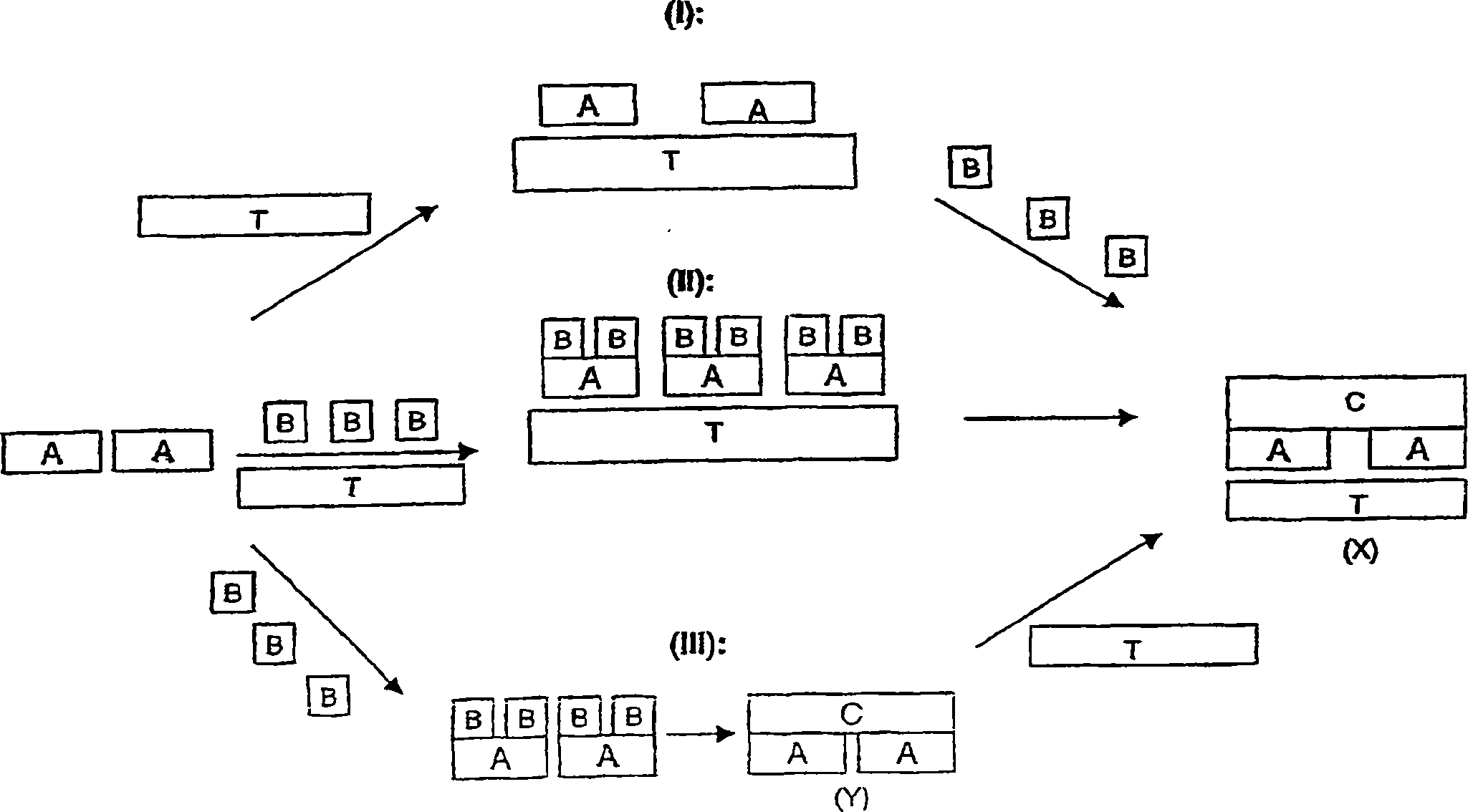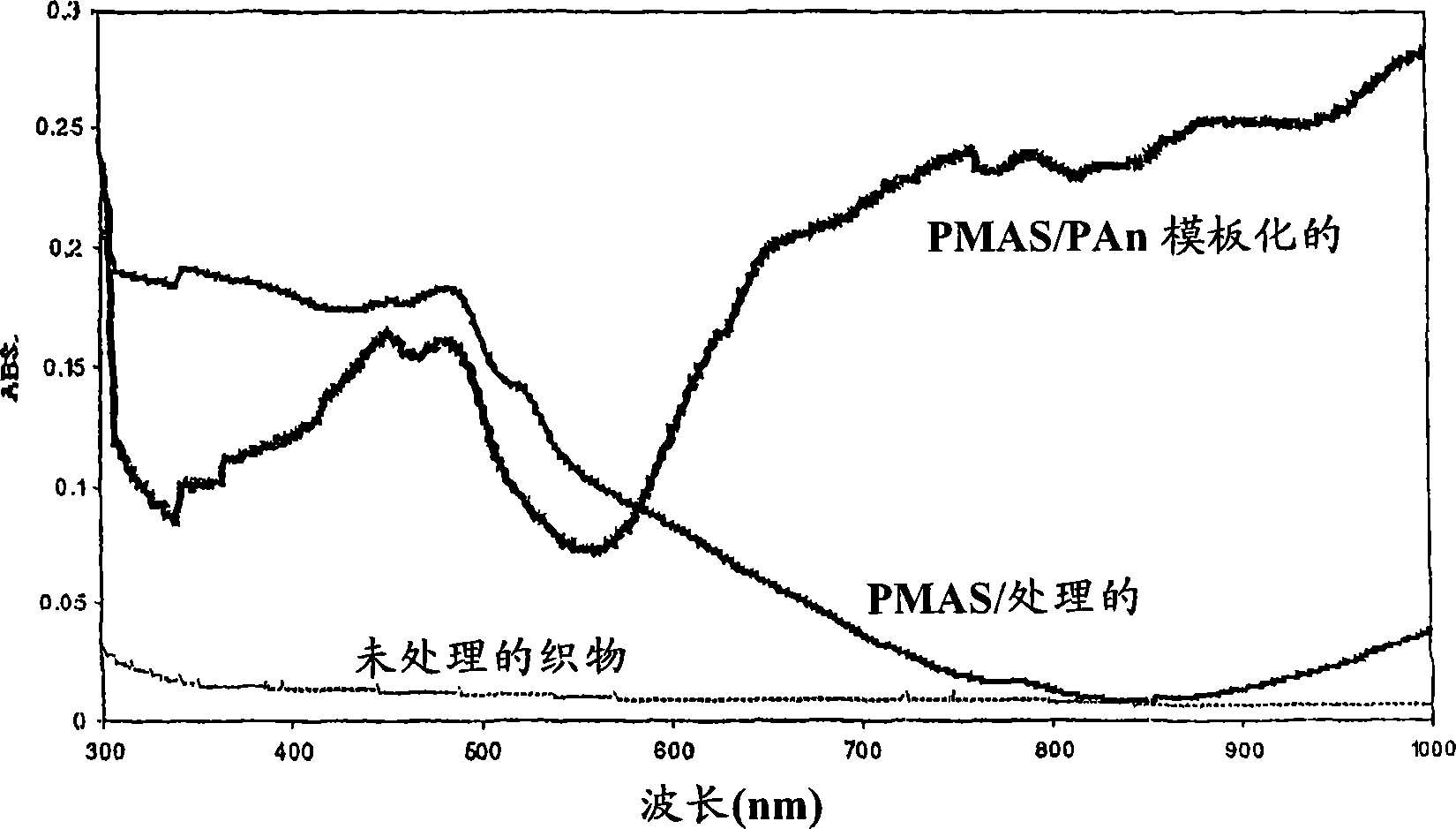Conductive spinning product
A textile and non-conductive technology, which is applied in the field of conductive textiles and the production of conductive textiles, and can solve problems such as the difficulty of close contact between conductive polymers and textiles
- Summary
- Abstract
- Description
- Claims
- Application Information
AI Technical Summary
Problems solved by technology
Method used
Image
Examples
Embodiment 1
[0140] Examples 1.1.1-1.1.7 all involve the application of macromolecular templates to non-conductive textiles through exhaustion technology, in which the non-conductive textiles are impregnated in the application solution containing the macromolecular templates. Below we illustrate other application technologies.
[0141] 1.1.8.1 Pad dyeing
[0142] An aqueous pad dyeing solution (100 ml) containing 33.3 g / L PMAS was prepared at 20°C. Before use, the unadjusted pH of the padding liquor was 1.2. Before pad dyeing, 2 g of wool textile samples were soaked with 1 g / L Lissapol TN450 (non-ionic surfactant, ICI) at 20°C for 10 minutes. The fabric was rinsed with distilled water at room temperature and then passed through a squeeze roll set to provide 100% nip rate. Then add the wet fabric to the padding solution, let the fabric soak with the liquid within 2 minutes, while gently stirring by hand, and then take it out, passing through a squeeze roller that provides a 225% padding rate. T...
PUM
| Property | Measurement | Unit |
|---|---|---|
| electrical conductivity | aaaaa | aaaaa |
Abstract
Description
Claims
Application Information
 Login to View More
Login to View More - R&D
- Intellectual Property
- Life Sciences
- Materials
- Tech Scout
- Unparalleled Data Quality
- Higher Quality Content
- 60% Fewer Hallucinations
Browse by: Latest US Patents, China's latest patents, Technical Efficacy Thesaurus, Application Domain, Technology Topic, Popular Technical Reports.
© 2025 PatSnap. All rights reserved.Legal|Privacy policy|Modern Slavery Act Transparency Statement|Sitemap|About US| Contact US: help@patsnap.com


